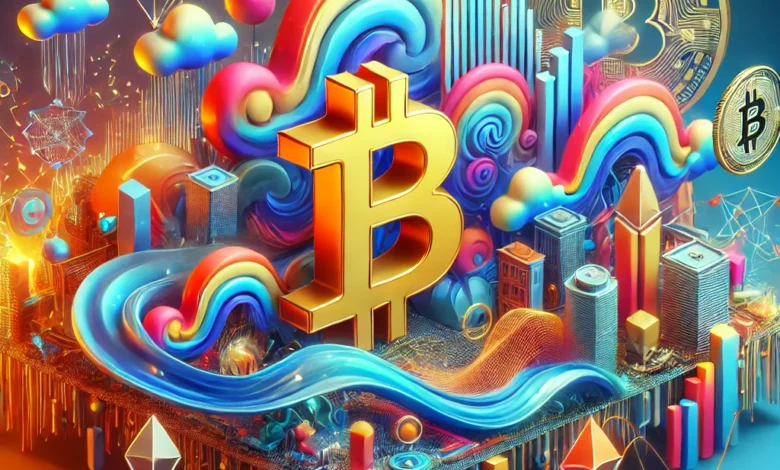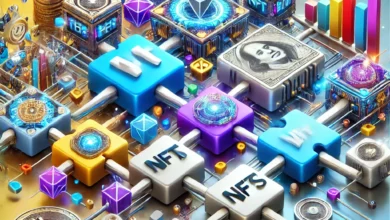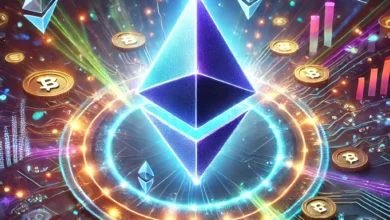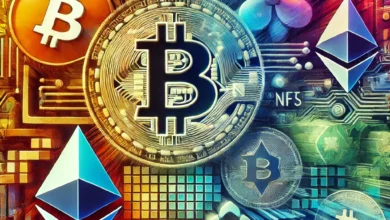The Rise of NFTs: Transforming the Digital Art Landscape

In the ever-evolving world of cryptocurrencies, Non-Fungible Tokens (NFTs) have emerged as a groundbreaking innovation, transforming how we perceive and interact with digital assets. This article delves into the rise of NFTs, their impact on the digital art landscape, and the broader implications for the cryptocurrency ecosystem.
What Are NFTs?
Non-Fungible Tokens, or NFTs, are unique digital assets verified using blockchain technology. Unlike cryptocurrencies such as Bitcoin or Ethereum, which are interchangeable and hold the same value, NFTs are one-of-a-kind. Each NFT contains distinct information that differentiates it from any other token, making it non-fungible.
NFTs can represent various digital items, including art, music, videos, and even virtual real estate. The blockchain ledger ensures the provenance and ownership of these digital assets, providing a level of authenticity and scarcity previously unattainable in the digital realm.
The Explosion of NFT Marketplaces
The advent of NFTs has given rise to numerous marketplaces where creators can mint, sell, and trade their digital works. Platforms like OpenSea, Rarible, and Foundation have become hubs for artists and collectors alike. These marketplaces leverage blockchain technology to offer transparent, secure transactions and enforce royalty payments to creators, ensuring they benefit from secondary sales of their work.
OpenSea: Leading the Way
OpenSea stands out as one of the largest and most popular NFT marketplaces. It offers a vast array of digital assets, from art to virtual real estate. The platform’s user-friendly interface and comprehensive support for various blockchain networks make it a preferred choice for many NFT enthusiasts.
Rarible: Empowering Creators
Rarible distinguishes itself by allowing users to create and sell NFTs without needing extensive technical knowledge. Its community-driven approach and emphasis on empowering creators have made it a go-to platform for many digital artists. Rarible’s native token, RARI, further incentivizes participation by rewarding users for their activity on the platform.
Foundation: Curated Excellence
Foundation takes a more curated approach, focusing on high-quality digital art. The platform invites selected artists to mint their works, ensuring a level of exclusivity and artistic integrity. Foundation’s model has attracted renowned artists and high-profile collectors, contributing to its reputation as a premier destination for digital art NFTs.
NFTs and Digital Art: A Symbiotic Relationship
The relationship between NFTs and digital art is symbiotic, with each driving the other’s growth. NFTs have provided digital artists with a new revenue stream and a way to authenticate their work. This authentication is crucial in an age where digital files can be easily copied and distributed without proper attribution or compensation to the original creator.
Empowering Artists
NFTs empower artists by allowing them to retain control over their work and receive royalties from secondary sales. This model contrasts with traditional art markets, where artists often lose control and financial benefit once their work is sold. The ability to mint NFTs and sell directly to collectors has democratized the art world, enabling artists from all backgrounds to reach a global audience.
Expanding the Collector Base
For collectors, NFTs offer a new way to invest in art and support their favorite creators. The digital nature of NFTs means that ownership is easily verifiable, and the risk of purchasing counterfeit works is significantly reduced. Furthermore, the growing popularity of NFTs has attracted a new generation of collectors who may not have previously engaged with the traditional art market.
NFTs Beyond Art: Expanding Use Cases
While digital art remains the most prominent use case for NFTs, their potential extends far beyond this domain. NFTs are being used to represent ownership of various digital and physical assets, opening new possibilities across multiple industries.
Virtual Real Estate
In virtual worlds like Decentraland and The Sandbox, NFTs represent ownership of virtual land and properties. These digital spaces are becoming increasingly popular as users seek new ways to socialize, work, and play in online environments. Virtual real estate NFTs can be bought, sold, and developed, much like physical properties, creating a burgeoning market with significant investment potential.
Music and Entertainment
Musicians and entertainers are also exploring NFTs as a means to distribute their work and connect with fans. Artists like Kings of Leon and Grimes have released NFT albums, offering exclusive content and experiences to their supporters. NFTs can also represent concert tickets, merchandise, and other memorabilia, creating new revenue streams for the entertainment industry.
Gaming
The gaming industry has embraced NFTs to create in-game assets that players can own and trade. Games like Axie Infinity and CryptoKitties have demonstrated the potential of NFTs to enhance the gaming experience and create thriving player-driven economies. By enabling true ownership of in-game items, NFTs have the potential to revolutionize the gaming industry.
Challenges and Criticisms
Despite their growing popularity, NFTs are not without challenges and criticisms. Environmental concerns, market volatility, and issues related to copyright and intellectual property are among the primary points of contention.
Environmental Impact
The environmental impact of NFTs, particularly those minted on energy-intensive blockchain networks like Ethereum, has been a significant concern. The high energy consumption associated with these networks has led to criticism from environmental advocates. However, efforts are underway to address these issues, such as Ethereum’s transition to a more energy-efficient proof-of-stake consensus mechanism and the development of eco-friendly NFT platforms.
Market Volatility
The NFT market is still in its nascent stages, and its volatility has raised questions about long-term sustainability. The rapid rise in the value of certain NFTs has led to fears of a speculative bubble. As with any emerging market, potential investors and participants should approach with caution and conduct thorough research.
Copyright and Intellectual Property
The ease of minting NFTs has led to cases of copyright infringement, where individuals mint and sell digital works without the original creator’s permission. This issue underscores the need for robust mechanisms to verify the authenticity and ownership of digital assets. Platforms and creators must work together to address these challenges and protect intellectual property rights.
The Future of NFTs
The future of NFTs is filled with possibilities as the technology continues to evolve and new use cases emerge. As the market matures, we can expect greater integration with mainstream industries, enhanced security measures, and a more sustainable approach to blockchain technology.
Integration with Traditional Industries
The integration of NFTs with traditional industries such as real estate, finance, and retail could unlock new value and drive broader adoption. NFTs can facilitate secure and transparent transactions, streamline supply chains, and enable new forms of asset ownership and management.
Enhanced Security and Regulation
As the NFT market grows, so does the need for enhanced security and regulation. Implementing standardized practices and regulatory frameworks can help protect creators and collectors, ensuring a safe and fair marketplace. Collaborative efforts between industry stakeholders, policymakers, and technology developers will be crucial in achieving this goal.
Sustainability Initiatives
Sustainability will remain a key focus as the NFT ecosystem evolves. Ongoing efforts to reduce the environmental impact of blockchain technology, such as the adoption of proof-of-stake mechanisms and the development of eco-friendly NFT platforms, will be essential in addressing environmental concerns and ensuring the long-term viability of NFTs.
NFTs have undoubtedly revolutionized the digital art landscape, offering new opportunities for artists, collectors, and investors. As the technology matures and expands into new industries, the potential for NFTs to reshape the digital economy becomes increasingly apparent. By addressing the challenges and embracing the possibilities, the NFT ecosystem can continue to thrive, fostering innovation and creativity in the digital age.




